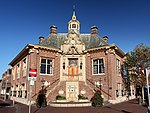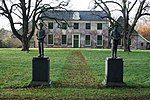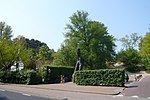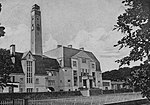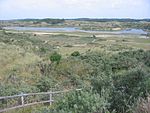Zandvoort aan Zee railway station
1881 establishments in the NetherlandsRailway stations in North HollandRailway stations in the Netherlands opened in the 19th centuryRailway stations opened in 1881Zandvoort

Zandvoort aan Zee is a terminal train station in the town of Zandvoort, Netherlands. The station opened on 3 June 1881, and is within walking distance of the beach. The station is on the Haarlem–Zandvoort railway. The station has 2 platforms and services are operated by Nederlandse Spoorwegen. Until 1995 trains from Maastricht and Heerlen terminated at this station.
Excerpt from the Wikipedia article Zandvoort aan Zee railway station (License: CC BY-SA 3.0, Authors, Images).Zandvoort aan Zee railway station
Zeestraat, Zandvoort
Geographical coordinates (GPS) Address Nearby Places Show on map
Geographical coordinates (GPS)
| Latitude | Longitude |
|---|---|
| N 52.375833333333 ° | E 4.5313888888889 ° |
Address
Spoor 2
Zeestraat
2042 LC Zandvoort
North Holland, Netherlands
Open on Google Maps
